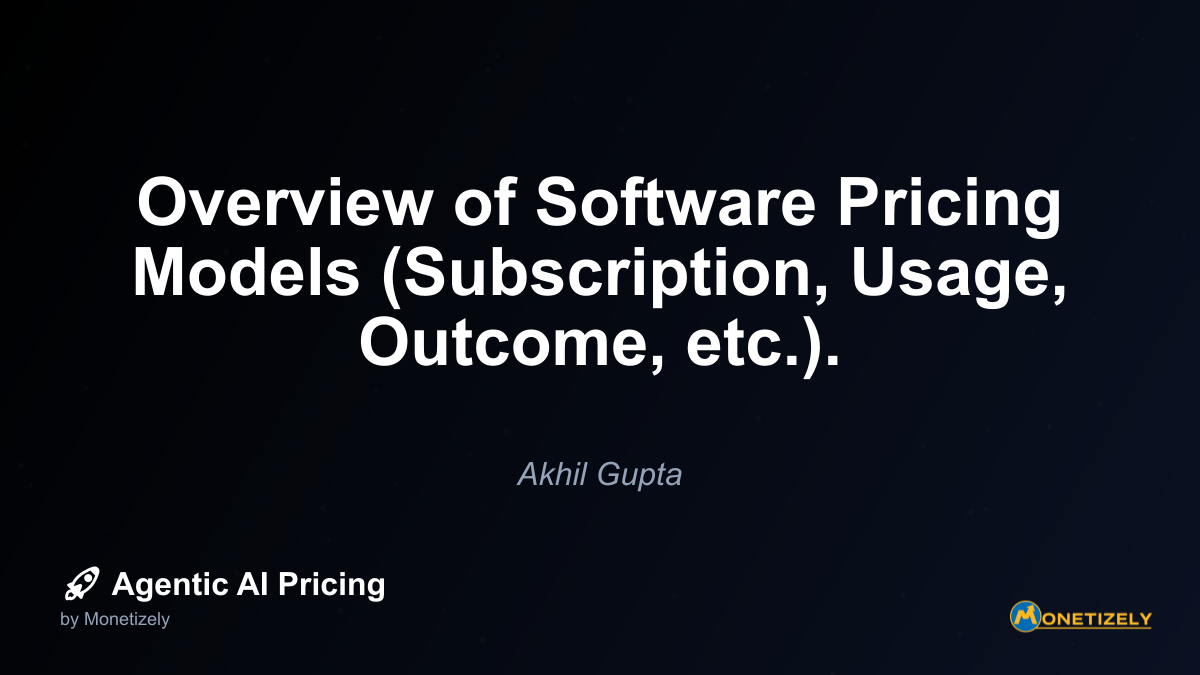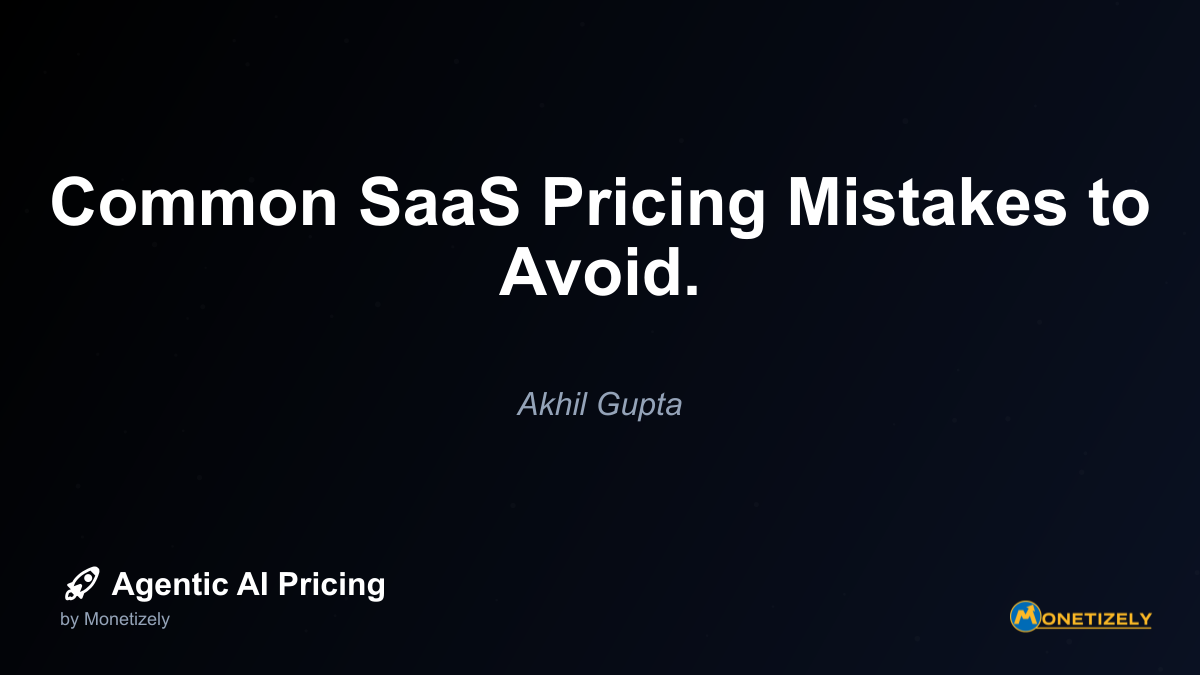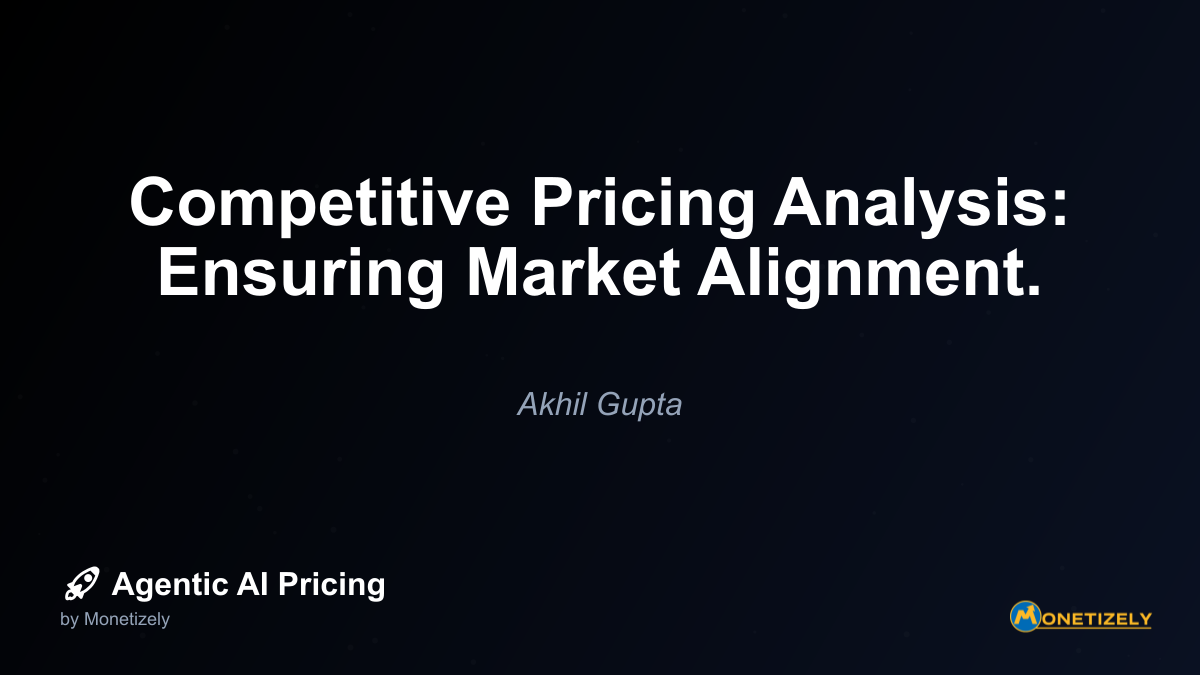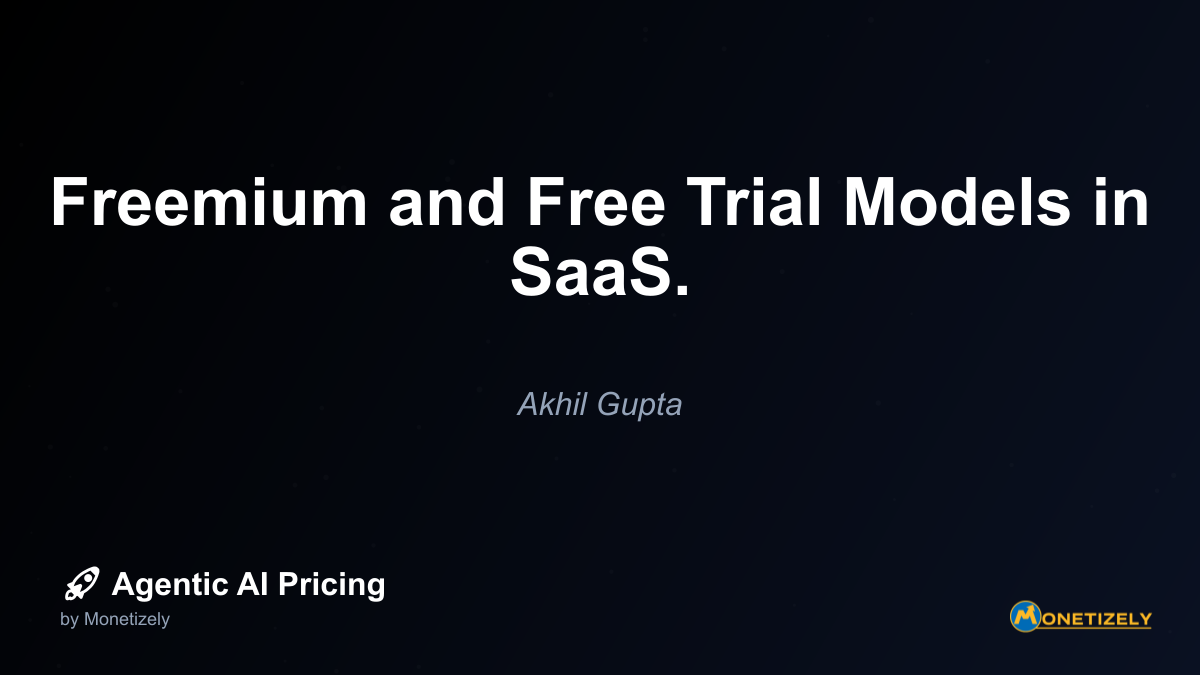· Akhil Gupta · Pricing Fundamentals · 13 min read
Subscription vs. Usage-Based Pricing: Pros and Cons.
AI and SaaS Pricing Masterclass
Learn the art of strategic pricing directly from industry experts. Our comprehensive course provides frameworks and methodologies for optimizing your pricing strategy in the evolving AI landscape. Earn a professional certification that can be imported directly to your LinkedIn profile.
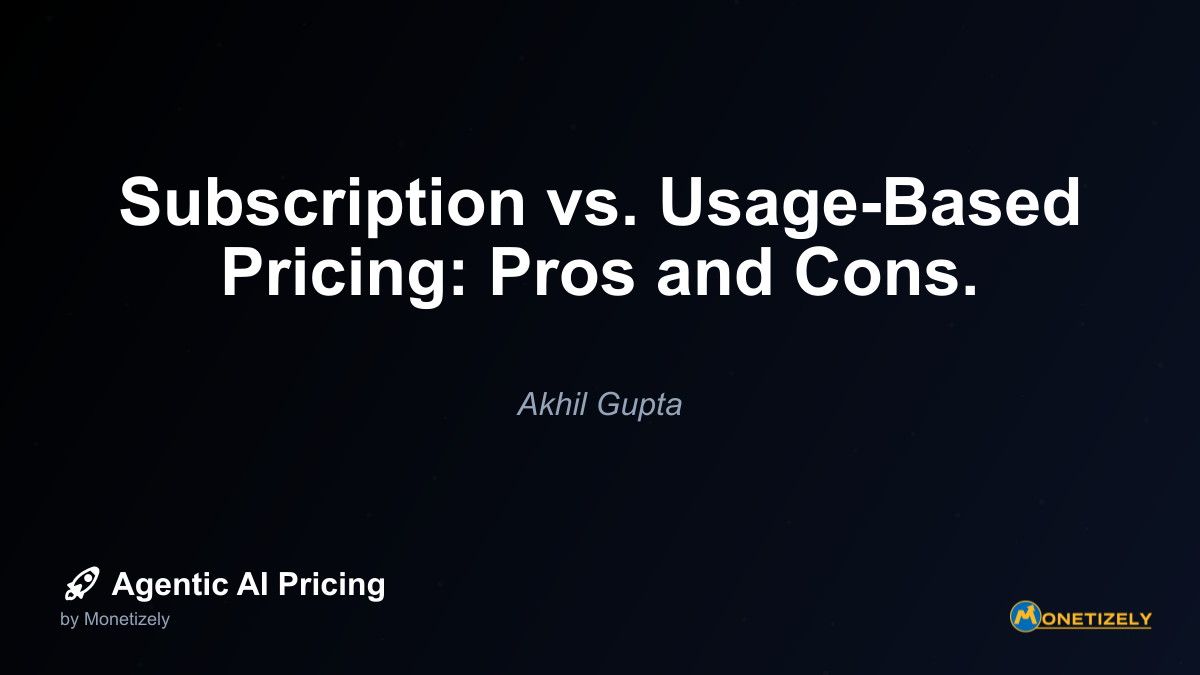
In today’s digital economy, businesses face a critical decision when setting their pricing strategy: should they opt for a traditional subscription model with fixed recurring fees, or embrace usage-based pricing where customers pay according to their consumption? This choice significantly impacts revenue predictability, customer acquisition, retention, and overall business growth.
The subscription versus usage-based pricing debate has intensified as companies seek pricing models that align with evolving customer expectations and business objectives. According to recent research, usage-based pricing adoption grew by 31% from 2023 to 2025, with 56% of SaaS companies now incorporating some usage or consumption element in their pricing structure, while pure subscription models dropped from 65% to 43% during the same period.
This comprehensive guide examines both pricing models in detail, analyzing their advantages and disadvantages from both vendor and customer perspectives, and exploring when each approach might be most appropriate for different business scenarios.
Understanding Subscription Pricing
Subscription pricing, sometimes called fixed-fee pricing, involves customers paying a predetermined amount at regular intervals (typically monthly or annually) for access to a product or service. This model has become the backbone of the SaaS industry and has expanded into numerous other sectors.
How Subscription Pricing Works
Under a subscription model, customers pay a recurring fee regardless of how much they use the service. Typically, subscription offerings are structured in tiers with different feature sets and capabilities:
- Free tier: Limited functionality to attract users and demonstrate value
- Basic tier: Core features at an entry-level price point
- Professional/Team tier: Enhanced features for growing businesses
- Enterprise tier: Full feature set with customization options for large organizations
Companies often offer discounts for annual commitments to improve cash flow and reduce churn. The predictability of subscription revenue has made this model particularly attractive to investors and businesses seeking stable growth trajectories.
Pros of Subscription Pricing for Vendors
1. Predictable and Stable Revenue
Subscription models provide businesses with highly predictable revenue streams, making financial planning and forecasting significantly more reliable. This predictability is particularly valuable for resource allocation, hiring decisions, and investment planning.
“Subscription revenue provides a foundation of predictability that enables strategic long-term planning,” notes Scott Woody, CEO of Metronome. “This stability is why the SaaS industry embraced subscriptions as its primary model during its formative years.”
2. Higher Customer Lifetime Value
With recurring payments, subscription businesses often achieve higher customer lifetime value (CLV) compared to one-time purchase models. Once customers are onboarded, the focus shifts to retention rather than constant new acquisition, which is typically more cost-effective.
3. Simplified Financial Operations
Subscription billing is straightforward to implement and manage. The fixed nature of pricing simplifies accounting, revenue recognition, and financial reporting. This operational simplicity allows businesses to focus resources on product development and customer success rather than complex billing systems.
4. Enhanced Customer Relationships
The ongoing nature of subscriptions encourages businesses to maintain continuous relationships with customers. This creates natural opportunities for upselling, cross-selling, and gathering feedback that can drive product improvements.
5. Lower Barrier to Initial Purchase
By spreading costs over time rather than requiring large upfront payments, subscriptions can reduce purchase friction and make products more accessible to a broader customer base. This is particularly valuable for enterprise solutions that might otherwise require significant capital expenditure approval.
Cons of Subscription Pricing for Vendors
1. Limited Revenue Expansion Opportunities
Subscription models can constrain revenue growth from existing customers unless they upgrade to higher tiers or add more users/licenses. This creates a ceiling effect where customers paying a fixed fee have no incentive to limit usage, potentially increasing costs for the vendor without corresponding revenue increases.
2. Churn Vulnerability
Subscription businesses are highly vulnerable to churn, with each renewal period presenting an opportunity for customers to reconsider their commitment. Even small increases in churn rates can significantly impact revenue projections and growth.
3. Value Perception Challenges
When customers use a product minimally but pay the same as heavy users, they may perceive poor value, leading to dissatisfaction and eventual cancellation. This value misalignment can be particularly problematic for products with variable usage patterns.
4. Competitive Pressure on Pricing
The transparency of subscription pricing makes direct competitive comparisons easy, often leading to price pressure and commoditization. This can force businesses into feature competition rather than focusing on delivering unique value.
5. Revenue Recognition Complexity
While simpler than usage-based billing in many ways, subscription models still require careful attention to revenue recognition rules like ASC 606, ensuring revenue is recognized as services are delivered over the subscription period.
Pros of Subscription Pricing for Customers
1. Budget Predictability
Fixed subscription costs make budgeting straightforward for customers. This predictability is particularly valuable for businesses managing operational expenses and planning resource allocation.
2. Simplified Decision-Making
The all-inclusive nature of subscription tiers reduces cognitive load for customers, who don’t need to constantly monitor or optimize their usage to control costs. This simplicity appeals to many decision-makers who prefer fixed costs.
3. Unlimited Usage Potential
Many subscription services offer unlimited usage within the constraints of the chosen tier, allowing customers to extract maximum value without worrying about incremental costs as usage increases.
4. Easier Procurement Process
Fixed subscription costs typically face fewer procurement hurdles than variable expenses, especially in enterprise environments where budget approvals for predictable expenses are simpler to obtain.
Cons of Subscription Pricing for Customers
1. Paying for Unused Value
Light users often pay the same amount as heavy users, creating value misalignment and potential dissatisfaction. This “one-size-fits-all” approach can be particularly problematic for businesses with fluctuating needs.
2. Lack of Usage Flexibility
Customers with seasonal or variable usage patterns may find themselves oversubscribed during low-usage periods and constrained during high-usage periods. This inflexibility can lead to either wasted resources or functionality limitations.
3. Feature Bundling Inefficiencies
Subscription tiers often bundle features that customers may not need or use, forcing them to pay for unnecessary functionality to access the specific features they require.
4. Upgrade Pressure
As customer needs evolve, they may face pressure to upgrade to higher-priced tiers even if they only need a small subset of the additional features offered.
Understanding Usage-Based Pricing
Usage-based pricing (UBP), also called consumption-based or pay-as-you-go pricing, charges customers based on their actual consumption of a product or service. This model has gained significant traction in recent years, particularly in cloud services, API platforms, and data-intensive applications.
How Usage-Based Pricing Works
In a usage-based model, customers are charged according to specific consumption metrics that reflect their utilization of the service. Common usage metrics include:
- Volume metrics: Data processed, storage used, API calls made
- Outcome metrics: Transactions processed, tickets resolved, leads generated
- Time-based metrics: Computing hours, user session duration
- Throughput metrics: Requests per second, bandwidth consumed
The pricing structure typically involves a rate card that defines the cost per unit of consumption, often with volume discounts as usage scales. Many usage-based models also incorporate free tiers or minimum commitments to ensure baseline revenue.
Pros of Usage-Based Pricing for Vendors
1. Revenue Alignment with Value Delivery and Costs
Usage-based pricing creates natural alignment between revenue, value delivered to customers, and costs incurred by the vendor. As customers derive more value and consume more resources, they pay accordingly, ensuring fair compensation for the vendor’s costs and value provided.
2. Enhanced Growth Potential
Research shows that companies with usage-based pricing grow faster than their subscription-only peers. According to a recent study from ICONIQ, usage-based companies experienced significantly higher net dollar retention rates, often exceeding 120%, compared to subscription companies that typically average around 110%.
3. Lower Adoption Barriers
The ability to start small and scale costs with usage reduces initial purchase friction, making it easier for customers to adopt new solutions without significant upfront commitment. This can accelerate customer acquisition and market penetration.
4. Data-Driven Product Insights
Usage-based models necessitate detailed tracking of customer behavior, providing rich data that can inform product development, feature prioritization, and customer success initiatives. This data advantage can create a virtuous cycle of improvement.
5. Competitive Differentiation
In markets dominated by subscription offerings, usage-based pricing can serve as a competitive differentiator, appealing to customers seeking greater cost flexibility and alignment with their actual value received.
Cons of Usage-Based Pricing for Vendors
1. Revenue Unpredictability
The variable nature of usage-based revenue makes financial forecasting more challenging. This unpredictability can complicate resource planning, investment decisions, and create anxiety for investors accustomed to subscription predictability.
2. Billing and Metering Complexity
Implementing usage-based pricing requires sophisticated metering, monitoring, and billing systems capable of accurately tracking and charging for consumption. This technical complexity increases implementation costs and ongoing operational overhead.
3. Customer Education Challenges
Usage-based models often require more customer education to help users understand how their actions translate to costs. This education burden can increase sales cycle length and customer success costs.
4. Cash Flow Variability
Post-consumption billing, common in many usage-based models, creates cash flow lags compared to subscription models where payment is received upfront. This timing difference can impact working capital and financial planning.
5. Pricing Optimization Challenges
Determining the optimal price per unit of consumption is complex and requires careful analysis of costs, customer value perception, and competitive positioning. Getting this wrong can lead to either margin erosion or customer adoption barriers.
Pros of Usage-Based Pricing for Customers
1. Cost Aligned with Value Received
Customers pay in proportion to the value they extract, creating a perception of fairness and eliminating the “paying for what I don’t use” problem common in subscription models. This alignment is particularly valuable for businesses with variable or unpredictable usage patterns.
2. Lower Entry Barriers
The ability to start with minimal commitment and scale costs with usage makes it easier to adopt new solutions, especially for startups, small businesses, or departmental initiatives with limited initial budgets.
3. Cost Control and Optimization Opportunities
Usage-based models give customers visibility and control over their costs, allowing them to optimize usage patterns to manage expenses. This control can be particularly valuable during budget constraints or economic uncertainty.
4. Scalability Without Renegotiation
As customer needs grow, their usage and costs scale automatically without requiring contract renegotiations or tier upgrades. This scalability simplifies expansion and eliminates the artificial growth constraints sometimes imposed by subscription tiers.
Cons of Usage-Based Pricing for Customers
1. Cost Unpredictability
Variable consumption can lead to unpredictable expenses, creating budgeting challenges and potential “bill shock” when usage unexpectedly spikes. This unpredictability is particularly problematic in enterprise environments with strict budget controls.
2. Optimization Overhead
The need to monitor and manage usage to control costs creates additional overhead for customers. This monitoring burden can distract from core business activities and create anxiety about unexpected charges.
3. Complex Procurement Processes
Variable expenses often face greater scrutiny in procurement processes, especially in large organizations where fixed costs are easier to budget and approve. This complexity can slow adoption and create internal friction.
4. Difficult Cost Comparisons
Comparing costs across vendors with different usage metrics and pricing structures can be challenging, making it difficult for customers to determine the most cost-effective solution for their needs.
Real-World Examples: Companies and Their Pricing Models
Adobe: Successful Transition to Subscription
Adobe’s shift from perpetual licenses to a subscription-only model via Creative Cloud starting in 2012 represents one of the most significant pricing transformations in software history. Despite initial customer backlash, Adobe persisted with the transition and achieved remarkable results:
- Recurring revenue streams created predictability
- Faster software updates and improved customer engagement
- Extensive market research informed tiered pricing (individuals, business, enterprise)
- Heavy investment in customer education through webinars and tutorials eased the transition
This case demonstrates how even established companies with legacy pricing models can successfully transition to subscription approaches when executed with careful planning and customer support.
Slack: Innovative Per-Active-User Subscription
Slack implemented an innovative “per active-user” subscription model that bills only for active users and refunds for inactive ones. This approach:
- Built trust with customers by ensuring they only pay for actual usage
- Created a perception of fairness while maintaining the predictability of subscription billing
- Contributed to rapid valuation growth to approximately $20 billion within a few years of launch
- Differentiated the company in a competitive collaboration tool market
Slack’s approach demonstrates how creative subscription models can incorporate elements of usage-based fairness while maintaining the predictability advantages of fixed recurring revenue.
Twilio and Stripe: Usage-Based Success Stories
Twilio and Stripe are classic examples of successful usage-based pricing models, charging customers per API call or transaction. This approach:
- Aligns revenue directly with customer usage and value
- Enables low-friction adoption for developers and startups
- Scales naturally with customer growth
- Creates strong incentives for product quality and reliability
These companies demonstrate how usage-based pricing can drive rapid growth and customer loyalty when the usage metrics closely align with customer value.
Hybrid Approaches: The Best of Both Worlds
Many companies are adopting hybrid models that combine elements of both subscription and usage-based pricing:
- Base subscription + usage components: Providing predictable baseline revenue while capturing upside from heavy usage
- Usage-based with minimum commitments: Ensuring baseline revenue while maintaining the fairness of consumption-based billing
- Tiered usage pricing: Offering volume discounts as usage scales to reward customer growth
Cloud providers like AWS have evolved their pricing to include both on-demand (pure usage) and reserved capacity (subscription-like) options, giving customers flexibility to optimize for their specific needs.
Industry-Specific Considerations
The suitability of subscription versus usage-based pricing varies significantly across industries:
SaaS and Cloud Services
- Trend: Moving from pure subscription to hybrid models
- Considerations: Infrastructure costs, customer usage patterns, competitive differentiation
- Example: Salesforce combines per-user subscription with API usage pricing
Data and API Services
- Trend: Predominantly usage-based with volume tiers
- Considerations: Marginal costs, value metrics, developer adoption
- Example: Twilio charges per API call with volume discounts
AI and Machine Learning
- Trend: Complex hybrid models reflecting compute costs and value delivery
- Considerations: Computing resources, model training costs, outcome value
- Example: OpenAI initially used post-consumption billing based on tokens processed but shifted to prepaid credits to improve cost predictability
Media and Content
- Trend: Subscription dominance with emerging usage elements
- Considerations: Content costs, consumption patterns, competitive landscape
- Example: Spotify uses subscription for unlimited streaming but is exploring premium content add-ons
Manufacturing and IoT
- Trend: Moving from product sales to subscription services with usage components
- Considerations: Hardware costs, maintenance requirements, usage monitoring capabilities
- Example: Industrial equipment manufacturers offering “equipment-as-a-service” with baseline subscriptions and usage components
Psychological Aspects of Pricing Models
The psychology behind how customers perceive different pricing models significantly impacts adoption, satisfaction, and retention:
Subscription Psychology
- Predictability comfort: Fixed costs reduce anxiety and cognitive load
- Set-and-forget convenience: Eliminates ongoing decision-making
- Sunk cost commitment: Creates psychological investment in continued usage
- Risk of value perception issues: When usage doesn’t align with cost
Usage-Based Psychology
- Fairness perception: Paying only for what you use feels equitable
- Control satisfaction: Ability to manage costs creates empowerment
- Usage anxiety: Concerns about unexpected charges or bill shock
- Optimization burden: Constant monitoring can create cognitive overhead
Research shows that customer preferences often depend on their usage patterns and budget constraints. High-volume, predictable users typically prefer subscriptions for cost certainty, while variable or growing users often favor usage-based models for flexibility and fairness.
Financial Implications for Businesses
The choice between subscription and usage-based pricing has significant financial implications beyond the immediate revenue impact:
Revenue Recognition
- Subscription: Typically recognized ratably over the subscription period
- Usage-based: Recognized as consumption occurs, often requiring more complex tracking
Cash Flow Patterns
- Subscription: Front-loaded with annual prepayments, creating working capital advantages
- Usage-based: Delayed, with billing typically following consumption, creating potential cash flow lags
Valuation Impact
- Subscription: Higher valuation multiples due to predictability and stability
- Usage-based: Growing acceptance from investors as companies demonstrate consistent growth and retention
Cost Structure Alignment
- Subscription: Best when fixed costs dominate the business model
- Usage-based: Ideal when variable costs scale with customer usage
For publicly traded companies, the predictability of subscription revenue often translates to higher valuation multiples, though this gap is narrowing as usage-based companies demonstrate strong growth metrics and improving predictability.
Implementation Considerations and Best Practices
Successfully implementing either pricing model requires careful planning and execution:
For Subscription Implementation
- Tier structure optimization: Create clear value differentiation between tiers
- Contract term strategy: Balance customer commitment with flexibility
- Renewal process design: Minimize friction while maximizing retention
- Expansion path clarity: Make upgrade paths obvious and valuable
- Value communication: Continuously demonstrate ROI to prevent churn
For Usage-Based Implementation
- Metric selection: Choose usage metrics that align with customer value 2
Co-Founder & COO
Akhil is an Engineering leader with over 16+ years of experience in building, managing and scaling web-scale, high throughput enterprise applications and teams. He has worked with and led technology teams at FabAlley, BuildSupply and Healthians. He is a graduate from Delhi College of Engineering and UC Berkeley certified CTO.
Pricing Strategy Audit
Let our experts analyze your current pricing strategy and identify opportunities for improvement. Our data-driven assessment will help you unlock untapped revenue potential and optimize your AI pricing approach.

